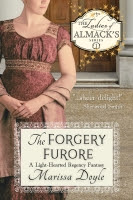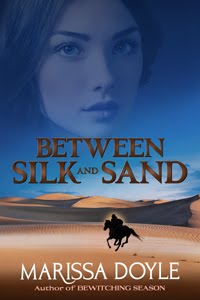But the waltz changed everything.
 Waltzing had been sweeping Europe for some time, but historians disagree on when it arrived in England. Some claim the Countess Lieven brought it back from Vienna in 1813 and introduced it at Almack’s. The Countess was one of the patronesses, those lady guardians Marissa talked about Tuesday. This caricature by George Cruikshank with her dancing with a Russian diplomat at Almack’s is dated 1813. Others say it was Tsar Alexander who first danced the waltz at Almack’s during his June 1814 visit to England. One account has him dancing it with the Countess and Lady Jersey, another of the patronesses (although not both together, I would imagine!).
Waltzing had been sweeping Europe for some time, but historians disagree on when it arrived in England. Some claim the Countess Lieven brought it back from Vienna in 1813 and introduced it at Almack’s. The Countess was one of the patronesses, those lady guardians Marissa talked about Tuesday. This caricature by George Cruikshank with her dancing with a Russian diplomat at Almack’s is dated 1813. Others say it was Tsar Alexander who first danced the waltz at Almack’s during his June 1814 visit to England. One account has him dancing it with the Countess and Lady Jersey, another of the patronesses (although not both together, I would imagine!).Whenever the dance arrived, it caused quite a stir. Imagine, couples touching! Locked in each other’s arms! It was called scandalous, wicked, and immoral. The London Times reportedly condemned the waltz as unseemly. The infamous Lord Byron wrote a satirical poem about how shocking it was (I find it difficult to believe it actually shocked him!). As Marissa mentioned on Tuesday, the lady patronesses of Almack’s had to grant permission before a young lady could dance it there. And mothers often refused their daughters permission to dance it anywhere else!
The waltz wasn’t generally the Viennese waltz we think of today. It actually had a number of open and closed holds. I couldn’t find an exact video of the way I’ve seen it performed by experts, but this comes close.:
Not until 1816 did the Prince Regent himself bless the waltz by including it in a formal state ball. By the end of Victoria's reign, waltzing had become the dance of choice at many a private ball and public assembly, and looked a bit more like this:
Want to know more? Come back next week for some very special posts from the Oregon Regency Society!





4 comments:
Interesting. I know some about the Viennese Waltz but little about other forms. It's amazing what things are scandalous at first.
That was lovely, great post~!
Glad you made the distinction of the waltz's acceptance clear. BTW, I've nominated your blog for the Excessively Diverting award. Please feel free to pass it on. Vic
Thanks, Vic! We're always glad to give you all another excuse to play in the nineteenth century. :-)
Post a Comment